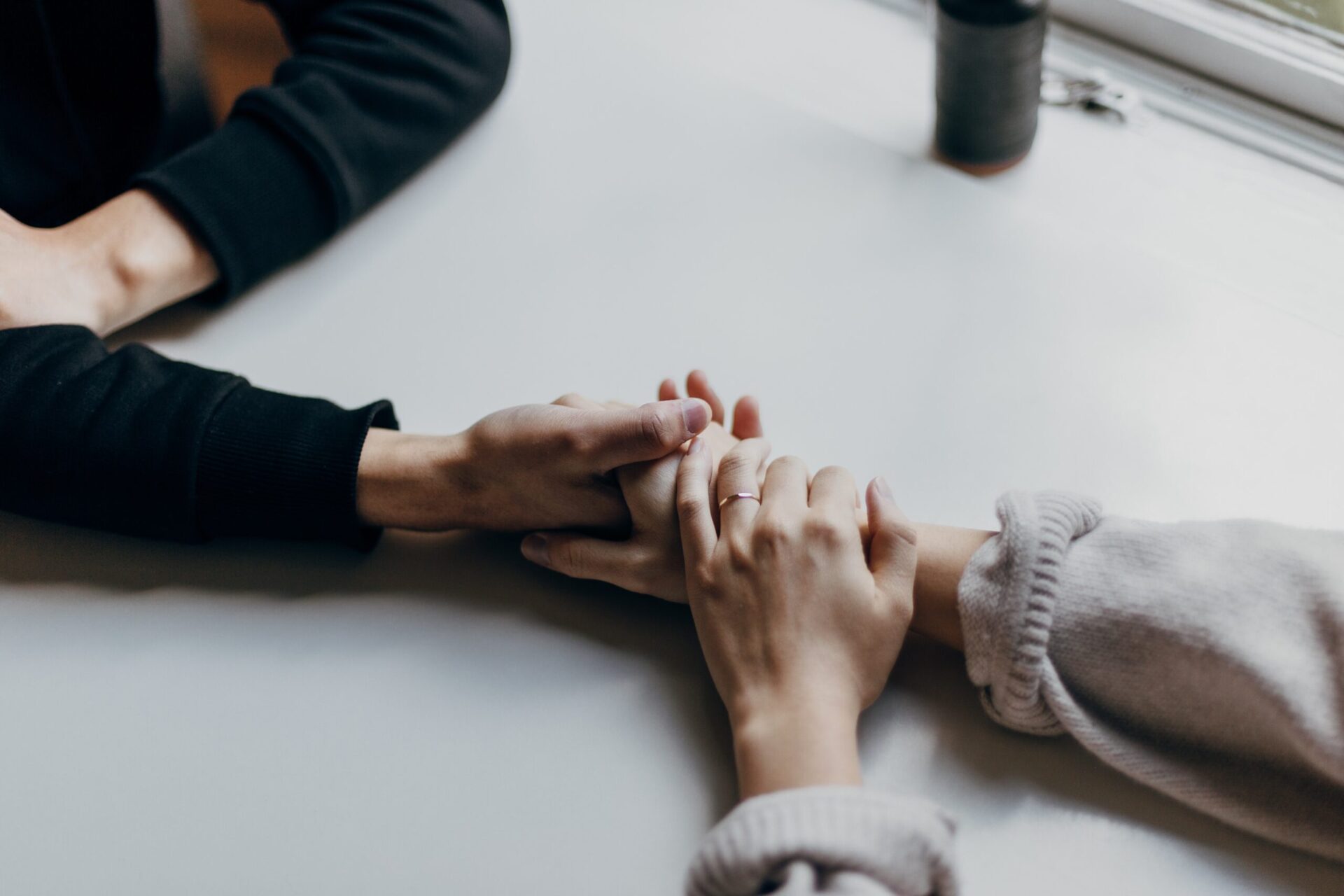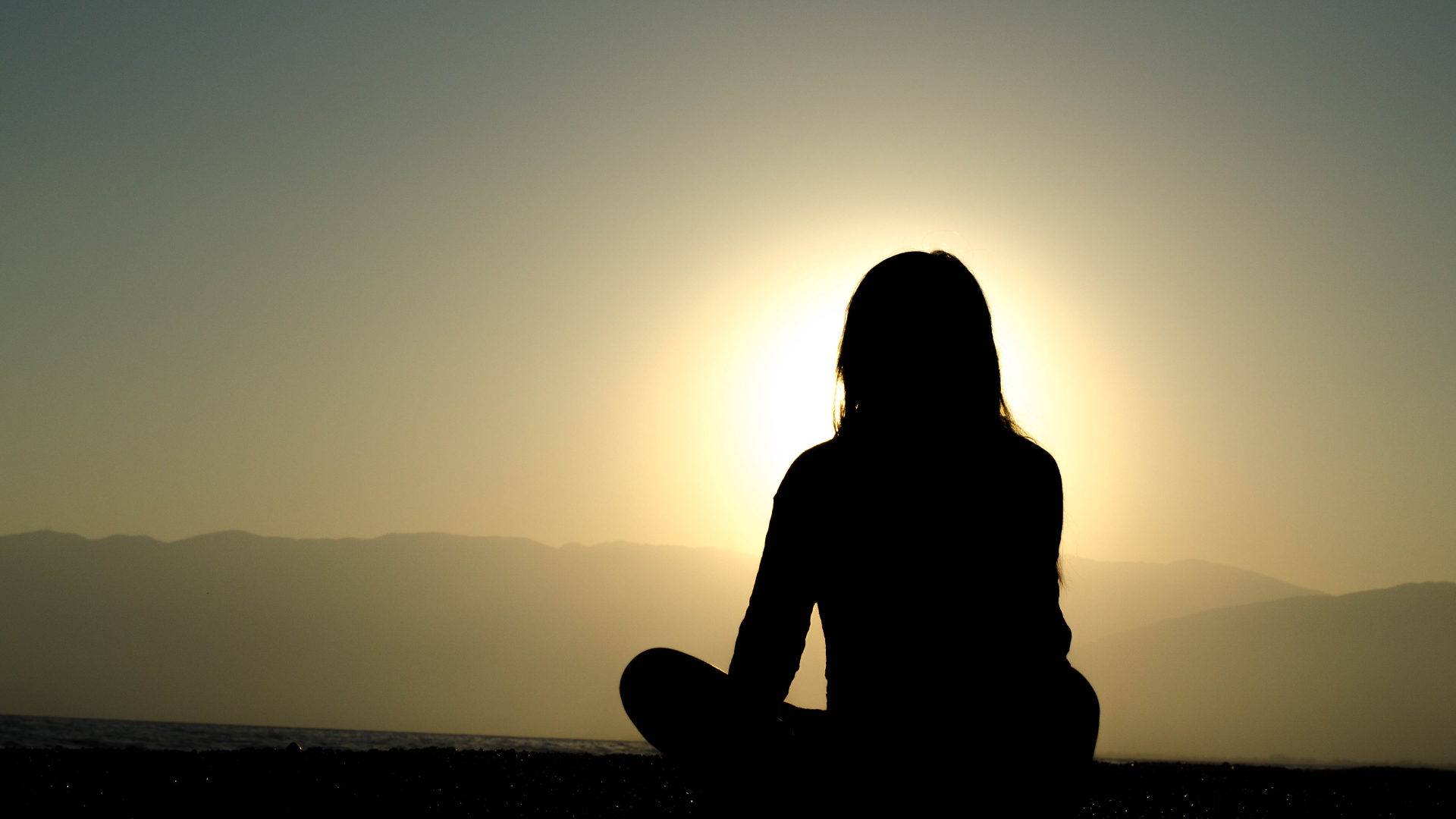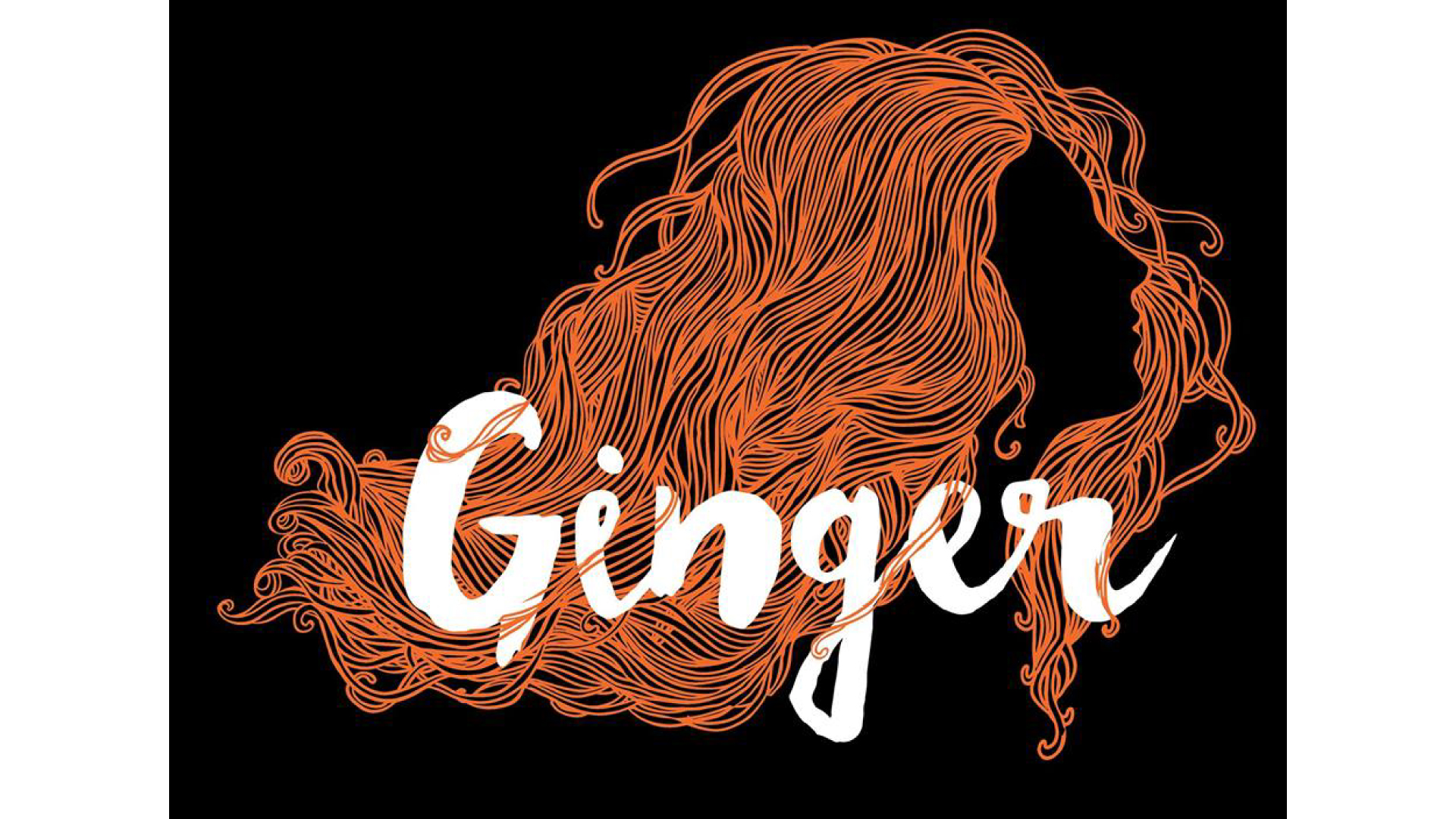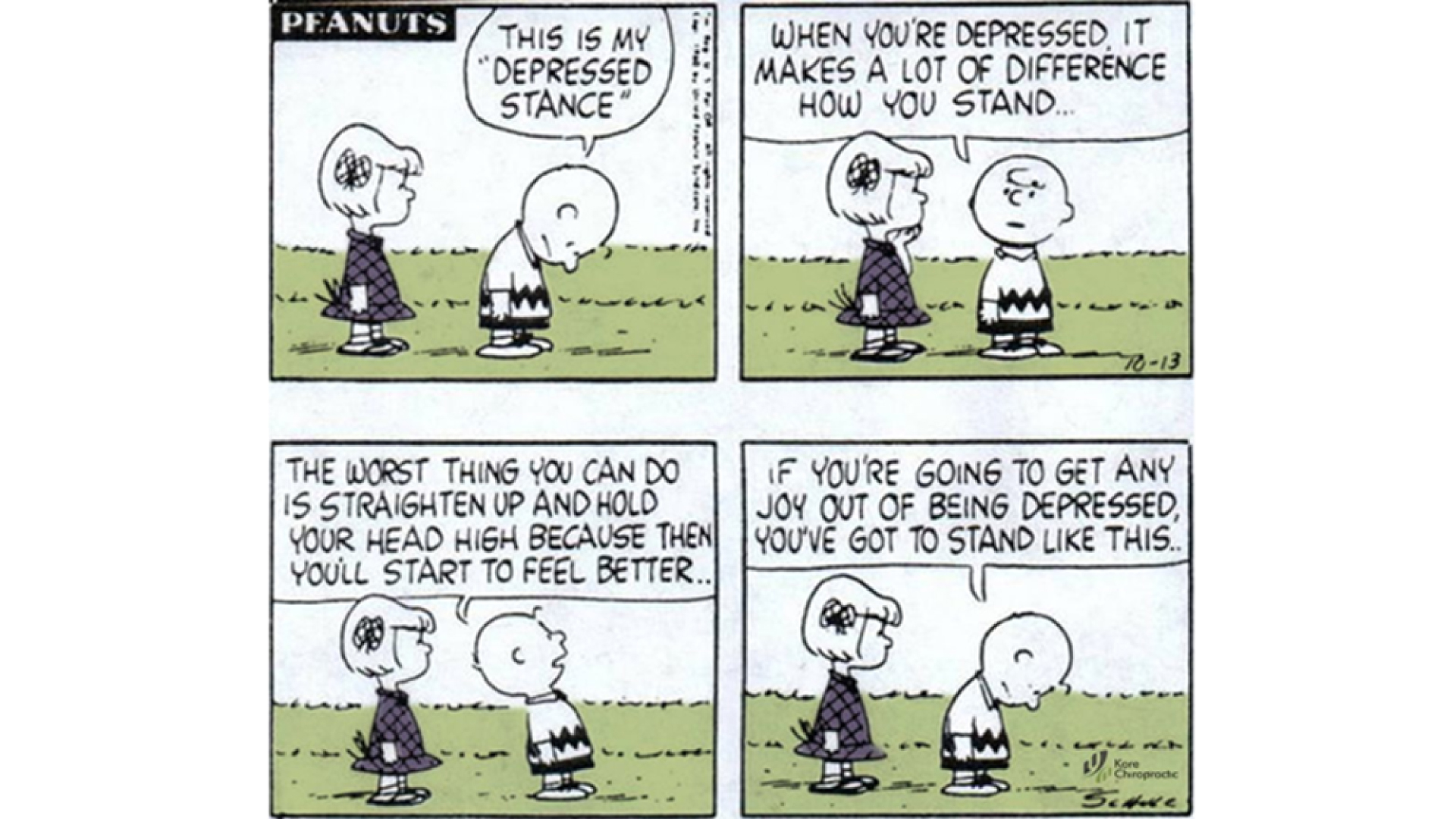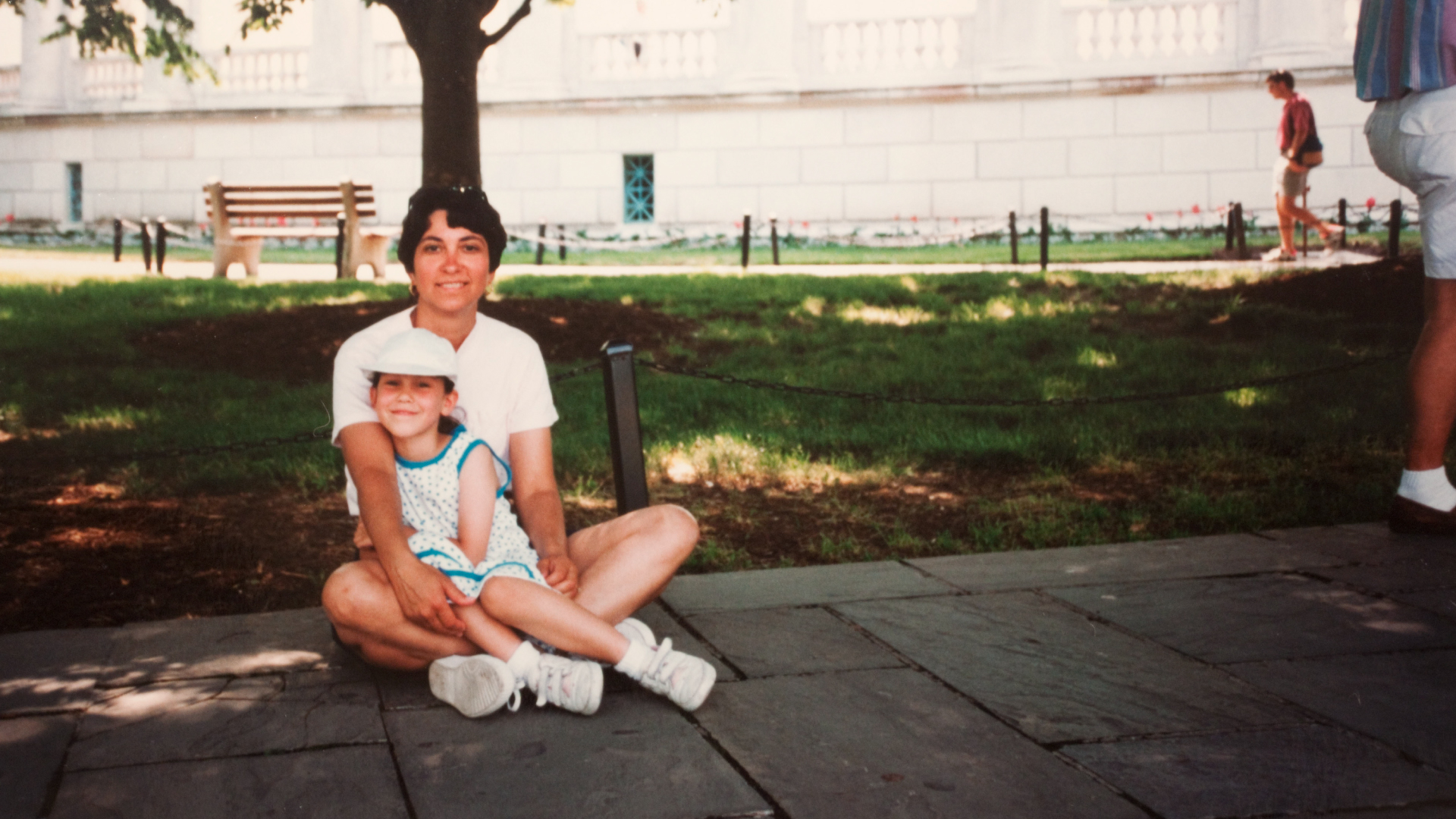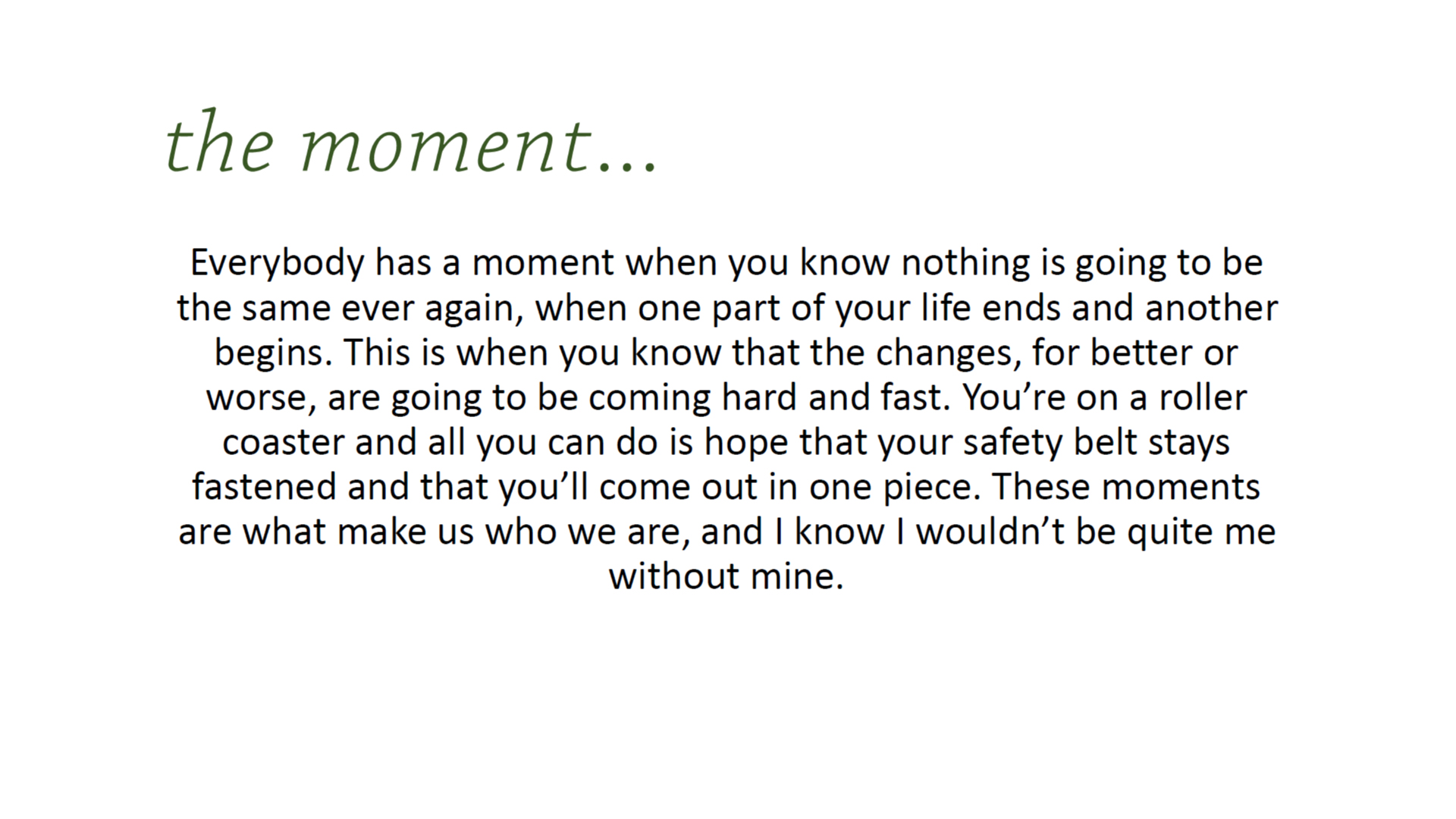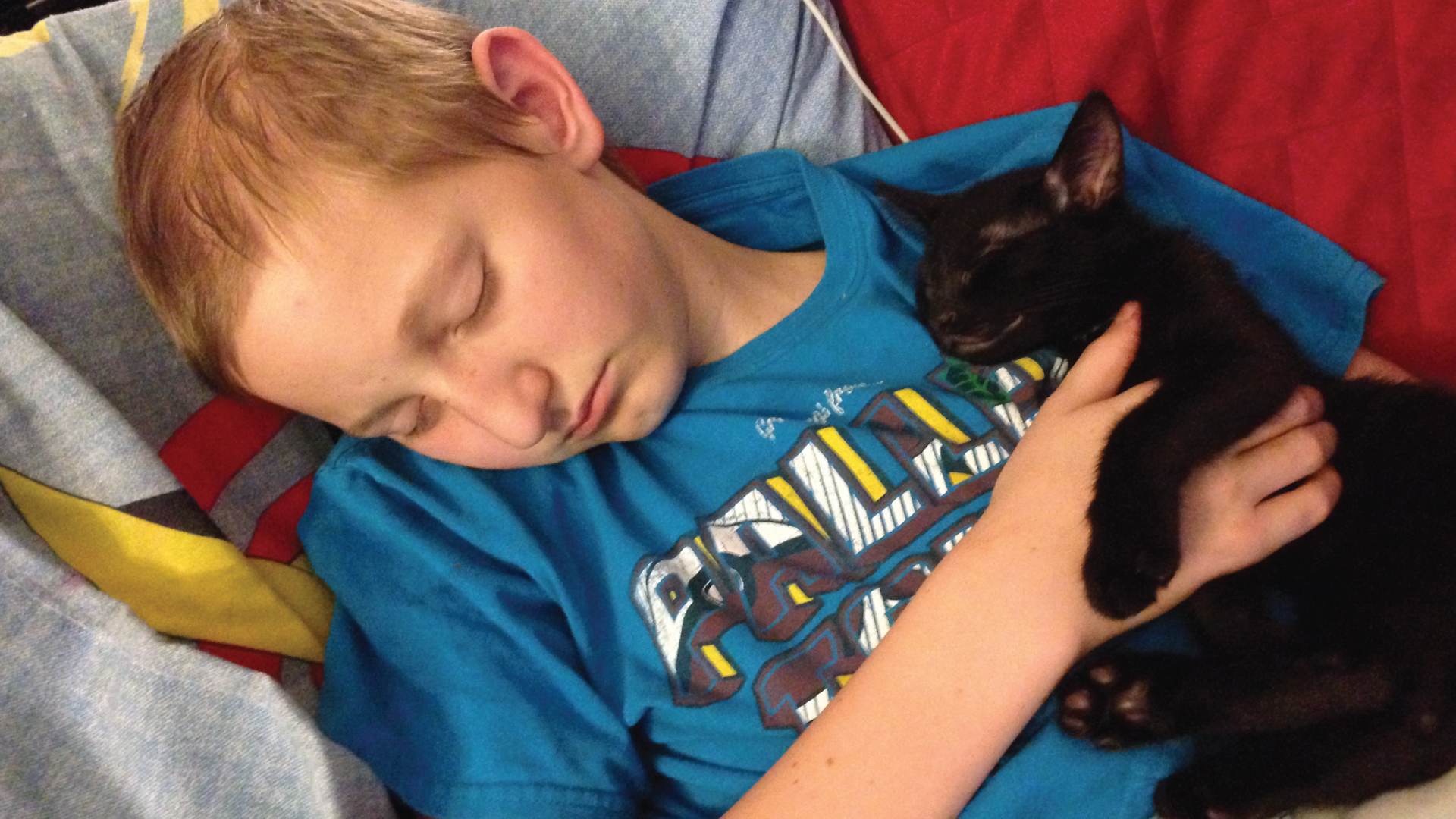Discussions about end-of-life care are often shrouded in fear – and with good reason. Many cultures discuss death only in terms of loss and pain, often with more questions than answers. And who wouldn’t want to avoid discussing death if it’s what is feared the most? The truth is something altogether harder: if we don’t discuss our choices and our decisions when we are able, those around us will make decisions for us, without the opportunity to respect and honor our wishes.
Continue readingFinding Grace Through Grief
The lesson I’ve learned from all of this tremendous grief is to show yourself some freaking grace. Give credit that your loved ones know how you feel, that the appreciation you have is known, and that while you’ll always wish for more time, it’s okay that things were left where they were.
Continue readingGrief to Gratitude
By Tara Picklo, Lov Yoga
For just a moment pause and notice how you feel when you think of the word grief…
Perhaps you notice your body tense up, shoulders round, breath stuck in your chest, tears well up or maybe you even sense anger, denial, or overwhelm. It may feel like waves are crashing over you in a turbulent sea during a storm and you can’t catch your breath or seem to stay afloat. This is all normal and hopefully, by reading this blog you may begin to realize that there is hope.
Grief is the “normal” human reaction to the loss of anything we are attached to in life. Attachment is evident when there is a deep emotional bond that results in a yearning or longing for what has been lost. Because we can feel attachment toward people, pets, things, jobs, lifestyles, identities, places we live, and more, we can feel grief through any major changes or transitions in life. Some of this grief has been experienced collectively as well through the pandemic shift of “normal” human culture. In the AYA community, there is also the unifying undercurrent of cancer. Additionally, each of us have an individual grief journey to explore. So if you are grieving a person who passed away or perhaps your own past identity as you try to understand a sense of self that may feel foreign, it’s all normal.
When my husband of 13 years passed away in 2016 from cancer, a big part of me did too. It felt like my outward appearance was just a shell and I was nearly empty inside. I now see this person as my past identity because I am not the same after such a loss and that’s okay. Through processing grief, I have begun to see the true nature that was inside of me all along. I just had to rediscover her and let her sing a new song.
My teacher, Antonio Sausys, normalizes grief by explaining different symptoms that can be experienced. Grievers tend to feel pain physically (tightness in chest, shallow breath, fatigue, inconsistent digestion); mentally (confusion, negative thinking, denial, lack of motivation); emotionally (shock, sadness, anger, resentment, fear, mood swings, depression, relief); behaviorally (crying, avoidance, clinging to past mementos); socially (withdraw, awkward labels, shifting of friend circles); and spiritually (mystery, confusion, clinging on, questions about God and death) just to name a few. It is also common for people to feel combinations of these symptoms and extremes within each realm. Transformation from feeling overwhelming effects of these symptoms is the ultimate goal because we can’t change the loss. We can however transform ourselves by learning how to feel balance while focusing on what we can control in life.
These symptoms of grief we feel are often most intense when we are resisting them, kind of like trying to swim upstream rather than flow down freely with the river current. It’s normal to feel for a bit and then start to think, “I don’t have time for this,” or “That’s enough feeling for a while,” as the busyness of life takes over again. If we continue to push it aside, the body keeps the score, the symptoms get stuck inside, and then come back to say hi when least expected in unexpected ways.
Because of the extreme ways that grief manifests it’s also normal to feel triggered randomly or simply overtook with emotion. These S.T.U.G.s (Sudden Temporary Upsurges of Grief – as labeled by my teacher) can really catch us off guard by random triggers such as an innocent comment from a friend or in a tv show, an anniversary, favorite food, familiar smells, etc. We begin to feel like we are on a rollercoaster that seems to pick up speed just when we think it’s coming to a halt, taking deep dips and then shooting back up the tracks through twists and turns. The crazy, confounding part of these STUGs are they are also NORMAL! However, feel rest assured that through time there will be fewer STUGs and they will be spaced further apart. Time does not heal by itself though, it’s what is done within that time that will help process the pain caused by loss.
So what to do? The only way out is through. What if you let your armor slightly crack or take your mask off? What would it feel like to allow some vulnerability? If this sounds scary, that’s okay. It’s also scary to let grief lurk beneath the surface, stewing, brewing, and eventually turning into something that takes over when we least expect. Vulnerability and feeling helps to process the pain and then move into a phase of reconstructing life in a meaningful way. Vulnerability is the rain that must fall in order to see the rainbow after the storm.
Through years of conscious grief processing and commitment to learning about yoga therapy, I have realized that emotions are cycles and we have to feel to heal. I resisted this theory for a while and even ended up with a broken ankle in Bali six months after my husband passed away because I couldn’t slow down to feel my emotions. Now my tears are a beautiful, devotional, spiritual song and a regular release of stress. We do actually release cortisol through our eyeballs with tears, so cry on friends, let them flow!
The beautiful part about grief is that it becomes a blessing, friend, and teacher when are willing to dive into awareness and begin to process the unavoidable pain. My teacher also says that we don’t get over our grief, we transform our relationship to it and through this grief comes self-knowledge. With awareness comes the ability to do something about it. Suffering then becomes optional because it’s possible to learn ways to establish a sense of balance and control in life once again. There are many ways to do this and I have found that yoga therapy was what worked for me. I needed to talk, breathe, meditate, move mindfully, reflect, journal, cry and learn how to reconnect with my body, mind, and soul. By doing so I learned so much and my grief turned into gratitude for all that it taught me. Yoga also teaches that everything changes and everything will eventually end so we learn to let go of attachment and therefore suffering. I realize now that I can never go back to how life was and I have learned to embrace that with gratitude for what is to come. Sometimes our greatest suffering can be the silver lining in the cloud that was hovering above.
It is said that Grievers need to be heard, not fixed and I believe this is true. Much of my work with clients involves talking through grief. There is a point, however, when the stories we tell ourselves can become cyclical and the mind space feels like it’s tangled in knots. The body can feel heavy from grief and becomes important to move through the emotions that are stuck inside. That’s where the gateway to yoga leads into a garden of growth and possibility. Yoga means union of body, breath, mind and spirit. Through practices of breathwork, meditation, asana/movement, and self-reflection/contemplation, yoga helps us connect to our true nature and rediscover what has been lost inside. Yoga Therapy is the path out of the darkness into the light. We enjoy happiness even though it’s fleeting, we love knowing it one day will end. LOVE is energy and energy cannot be created or destroyed, only transformed. With Love and Gratitude we can transform our grief.
—
Hi! I’m Tara with Lov Yoga. I am merely a humble vessel who has journeyed along a rocky road of grief and feel called to help others do the same. It is an honor to create and share a safe space with others where they can shed layers, become vulnerable and eventually open to the possibility that it is all within and grief is their greatest teacher in life. I am also a self-declared writer that has evolved by using writing as therapy to grow through what I’ve gone through. As a yoga teacher, I believe we find magic on our mats by learning to be mindful and breathe into shapes. This magic is the feeling of balance between body, breath, mind, and soul. I specialize in teaching yoga for cancer and grief support to individuals through private sessions and groups by way of yoga program development. I am grateful to have worked with the following organizations: Dear Jack Foundation, First Descents, Soul Ryeders, The Cancer Support Community, and Lacuna Loft. For more about my story and personal connection to cancer, please visit www.lov.yoga/about.
Grief to Gratitude: A Young Adult Cancer Yoga + Mindfulness Workshop
This 6-week program will normalize grief and help you tune-in and connect to your body, mind, and soul through yoga, breathwork, meditation, and other contemplative practices. We will join together as a community to discuss, process, and move through grief to find our inner GPS and sense of self. Together we will focus on life as it is now in the present moment, after a cancer diagnosis, compared to the life once imagined.
This workshop will have a 15 young adult cancer patient, survivor, and caregiver capacity, and will meet for 2 hours starting on Monday, March 22nd starting at 4:30 pm PT / 6:30 pm CT / 7:30 pm ET! This is a 6-week program and a commitment to each week is important for a safe space and cohesiveness of the course.
Who: 15 young adult cancer patients, survivors, and caregivers.
When: Mondays, 6 weeks, starting Monday, March 22nd @ 4:30-6:30 pm PT / 6:30-8:30 pm CT / 7:30-9:30 pm ET via video chat.* (*US time zones…please confirm what time this means for where you live).
How does it work? Lacuna Loft will send you an email about a week before the workshop with information on how to join the video chat. ***You’ll need the link that we’ll provide you, a headset with a microphone, and a webcam.***
Free Online Movie Screening of “Ginger” June 19 to 26
You’re invited to a free screening of Ginger, right from the comfort of your own home!
Your free ticket provides exclusive online access to streaming the film for free between June 19th and 26th.
About the Film:
Ginger Mathis is a recent college grad with a passion for life but an aversion to reality. Working a less-than-ideal job and dating a not-so-great guy, Ginger isn’t sure what direction her life is headed in. When she’s suddenly diagnosed with breast cancer, Ginger struggles to balance her illness, her treatment, and all the complicated components of her totally unsettled life.
Ginger was inspired by co-director Melissa Boratyn’s ongoing battle with breast cancer. Learn more about Ginger at GingerTheMovie.com and go here to watch the trailer.
About the Event:
This free community screening of Ginger is offered to help raise awareness about breast cancer in young adults, especially metastatic breast cancer, and the need for more support and research.
Presented by:
ABCD After Breast Cancer Diagnosis
Gilda’s Club Madison
Milwaukee Film
I Look At The Ground Now
I look at the ground now.
I don’t dare lift my head too high.
There are cracks in the sidewalk,
Precariously placed rocks,
And gnarly roots waiting patiently
To trip me up.
I don’t want to be caught off guard.
The truth scrapes up my knees.
It’s cold, and it’s hard.
I look at the ground now.
I put all my weight
In this present moment.
I try to own it –
The place where my body
Connects to the earth.
I count out my footprints
Do they measure my worth?
I look at the ground
In case there isn’t a horizon.
I don’t want to know
That all my stars have fallen.
I don’t want to plan for a future
That might never be here.
I’ll just keep moving forward
Until the ground disappears.
I look at the ground
So I won’t stray from the path.
I know where I’m going,
And there is safety in that.
I look at the ground,
And it is broken and rough.
But I am here.
I am now.
Isn’t that enough?
– Laura P.
How would you respond to the writing prompt, of the Peanuts comic strip?
—
This writing comes directly from one of our participants in our Unspoken Ink Creative Writing Group for young adult cancer survivors. The participants met for 2 hours each week, for 8 weeks during our Spring 2019 session. This writing has not been edited since its original creation, showing the wonderfully raw and powerful prose coming from the courageous writing group participants each week. If you’d like to sign up for future sessions, please email info@lacunaloft.org or sign up on our interest form.
Thinking About Death
I, like many young adult cancer survivors, think about death a fair amount. The wondering of ‘what happens next’ kind of freaks me out if I really let my mind sink into it…ok, not kind of…really freaks me out!
When my mother was dying, we weren’t allowed to talk about that big elephant in the room: What happens if the treatments don’t work? I feel like I missed out on this giant opportunity to learn and grieve and bond while still protected by my mom’s presence. My family acted as if she everything was a-ok, as if she wasn’t dying, up until the last week of her life when she couldn’t talk much anymore. I wish I could know what she hoped for me and what she hoped for herself, what she’d found worthwhile and worthless, and what she loved the most. I wish I could ask her questions about being an adult, about being human, and about facing something alone.
Joanna, from a Cup of Jo, recently wrote about this very subject.
“The fear of flying often kicks in around age 27, studies reveal, when people start to grapple with their own mortality. They don’t feel invincible like they did as rowdy kids and hormonal teenagers. I totally get that, don’t you? “As life experiences build up, the reality of our own vulnerability as human beings can set in,” says New York-based therapist Nathan Feiles.”
And cancer is way more of a reality check than a fear of flying, right? We face a disease that kills and then we keep on living with that knowledge. Sometimes I feel as if I have looked death in the face every day since my mother’s diagnosis and my own. At first, it made me frightened of everything. Now, every once in a while, I get moments of fearlessness. I have lived and I will die but I am proud of who I am and what I’ve done.
What about you? Do you think about death?
When To Say When
When we went to St. Louis Children’s Hospital in October 2011 and was told, “Your child has cancer”, naturally, the plan was to fight. To do everything in the doctor’s power to get rid of Sebastian’s cancer. So, that’s what we did, and Bastian was led down a path that consisted of chemo, radiation, bone marrow transplants, pain, nausea, more chemo and more pain. He spent countless days in the hospital, missed out on school and friends and birthday parties and swimming. He lost all of his hair, and a quarter of his body weight. The treatments made him so very sick. And all the while the scans continued to show no disease improvement. The treatments were not working.
In June, the side effects of the chemo and radiation caused him to have to get a urinary catheter due to damage in his bladder. Complications from the catheter landed him in the hospital for 12 days with several infections. Right about the time he was being released from the hospital, his docs gave us the treatment options available for him. After several discussions about what the options are, Sebastian finally tells us, he doesn’t want to do this anymore. He doesn’t want to keep making himself sick. He wants to stop.
Imagine making this decision for yourself, knowing that nothing you do will take your disease away, and everything you are doing is potentially causing more pain and more problems. Would you know when to say when? At some point, the desire for quality over quantity would present itself, and that’s where Bastian is.
We’ve known for a long time that we would be faced with this decision; I just didn’t think that Bastian would be the one to bring it up. The docs told us a long time ago that there is no chance of curing Bastian’s cancer, and that everything we are doing is an attempt to give him more time. After his last stay in the hospital, Bastian said he wanted to spend the rest of his time with the people he loves, not taking things to make himself sicker, and not constantly being hooked up to IV’s. He wants quality over quantity. His decision was not accepted by a lot people in his life, particularly his peers. They don’t understand how “he can just give up”; they think he should try every single thing possible. But those of us close to him know that this isn’t him “giving up” or “choosing to die”, this is him choosing to LIVE.
This is the ultimate act of letting go. Letting him make this decision, and follow through with it, means that we aren’t doing anything to slow his cancer growth, and that he will die from his disease. But letting him make this decision, and follow through with it, means he gets to live the rest of his life on his terms. And that is much more important to us.
Deciding to stop cancer treatments is a difficult and painful decision. Have you experienced something similar?
This post was originally published on Lacuna Loft back in 2014 and is one of our most read!
The Last Seven Days
Late in the spring, we shared a piece by Carol Anne responding to this same prompt… Now read another submission by a writer in the Unspoken Ink summer session…
The nights had felt endless and so had the days. The longest 8-minute phone call 18 months before was culminating in the longest, last 7 days.
Seven days of middle of the night meds.
Seven days of a constant stream of visitors.
Seven days of catch up phone calls.
Seven days of a beautiful, snowy world.
Seven days of ignoring the inevitable.
Seven days of silence.
Pills became syringes of liquids and creams. People became so far away, emotional expanses opening up the already pronounced physical distances between us. The world continued on outside in a ruthless veil of normalcy. Nods and blinks turned into silence.
The topic we’d ignored crashed through the house. It sloshed at our ankles and slowly rose up our legs, torsos, up to our noses.
I wanted to shout. Hit the rewind button. Ask all the questions I never knew I had and make space for the ones I hadn’t yet formed.
But then, all of a sudden, the seven days were over.
You were gone.
How would you respond to the writing prompt, ‘a moment’? “Everybody has a moment when you know nothing is going to be the same ever again, when one part of your life ends and another begins. This is when you know that the changes, for better or worse are going to be coming hard and fast. You’re on a roller coaster and all you can do is hope that your safety belt stays fastened and that you’ll come out in one piece. These moments are what make us who we are, and I know I wouldn’t be quite me without mine.”
—
This writing comes directly from one of our participants in our Unspoken Ink Creative Writing Group for young adult cancer survivors. The participants are meeting for 2 hours each week, for 8 weeks during our Summer 2018 session. This writing has not been edited since its original creation, showing the wonderfully raw and powerful prose coming from the courageous writing group participants each week. If you’d like to sign up for future sessions, please email info@lacunaloft.org or sign up on our interest form.
Flashback #7: When to Say When
To celebrate our 2-year anniversary of being a nonprofit, Lacuna Loft is bringing back our top 31 articles from our archives! The countdown to our top post is continuing today with Flashback #7: When to Say When, written by Dana. These 31 articles are the best of the best and we’re very happy to share them with you again! The countdown continues tomorrow!
….When we went to St. Louis Children’s Hospital in October 2011 and was told, “Your child has cancer”, naturally, the plan was to fight. To do everything in the doctor’s power to get rid of Sebastian’s cancer. So, that’s what we did, and Bastian was led down a path that consisted of chemo, radiation, bone marrow transplants, pain, nausea, more chemo and more pain. He spent countless days in the hospital, missed out on school and friends and birthday parties and swimming. He lost all of his hair, and a quarter of his body weight. The treatments made him so very sick. And all the while the scans continued to show no disease improvement. The treatments were not working…..…
……


